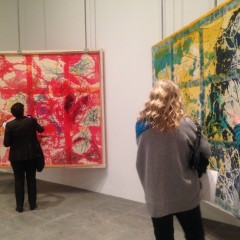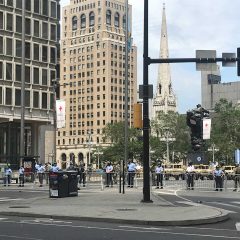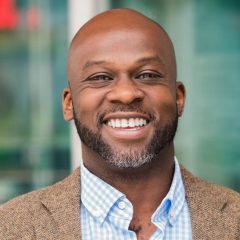
“Hell is other artists.” I repeat this mantra to myself whenever I encounter pedantic critiques from other artists about their peers’ work, or whenever I hear about a squabble over choices that are made in what’s meant to be a subjective form of expression. I tend to shy away from interpersonal conflict, though in recent years conflict has become a bigger elephant in the room that I can no longer ignore.
The consequence of avoiding these conflicts is that I avoid other artists who I “don’t trust”, though I know that the outcome of this hermit way of navigating art spaces is that I miss out on a lot of opportunities to interact with artists who might have something to teach me. In the past year alone, I’ve been encountering a lot of conflict with other people, which requires a lot of self-reflection about my own behavior and how much of it affects the situation. Some of it has been messy, and I’m not proud of the way these situations have turned out.
Turning to elders and others more established in the field for guidance
In times where I don’t know of any solutions to my problems, I tend to seek out my elders, or more established professionals who would have wisdom to offer. I wanted to know how they stayed resilient in the face of conflict in their art-making. I reached out to a group of older professionals across different disciplines for their insight. I asked the following questions:
“When you get into a conflict with another artist, what do you do? How do you handle interpersonal problems in your art-making or within your community? When do you feel that the situation is handled well, or handled poorly? What do you do when things become petty? How has overcoming these conflicts helped you grow as an artist?”
They were free to answer some, none, or all of these questions. What began as a survey for older professionals turned into a broader search for perspective from professionals who were more experienced than I was. I wanted to hear some opinions not just from Artistic/Executive Directors, but also freelancers who have had to navigate their careers in a very different way.
Don’t Avoid, Don’t React, but Respond
In an age where we’re seemingly more afraid of conflict, it actually appears as though one of the biggest through-lines I’ve encountered from these responses is that the key to resolving conflict is to confront it head-on. Allow the space for the conversation to occur. Don’t shut down and avoid it. But know the difference between responding and reacting. In particular, Valerie V Gay’s comments about the difference between responding and reacting feels especially important:
“Applying the concept of controlling myself and responding, not reacting to others (response comes from a place of strength and choice, whereas reaction is rooted in someone else’s control of the situation), have helped me stand firmly in my Truth and commitment to my art and every other aspect of my life. Over the years, I’ve had to learn how to respond, not react, how to maintain self-respect and not become petty and how show compassion to others, whether they seemingly deserved it or not. I’ve made tons of mistakes. I’ve learned from most. Apologized when necessary. Sometimes apologies are accepted, sometimes they are not. It’s all been a part of my growing process.”
– Valerie V Gay, Executive Director of Art Sanctuary
The Answers – Communicate, Listen, Seek Perspective, Seek Facilitator
Below are excerpts from the responses to my questions. They actually had a lot more to say, and if you’re curious in hearing their complete answers, I encourage you to check out this Google Doc to read more. I found their answers to be incredibly insightful, and I hope you do too.
“Sometimes things would get quite contentious in Headlong processes. We were committed to collaboration and non-hierarchical decision making, so things would often be SLOW and MESSY. In the end I think this makes for better art and better processes. But when we were fighting over some thing I remember once or twice thinking “our friendship is more valuable to me than this dance piece, and certainly more than whether the lights come up on a 10 count or a 15 count”, (or whatever the dumb argument was about…) In that way I was able to let go and not worry so much about the conflict and instead prioritize the interpersonal relationships.”
– Amy Smith, Co-Director of Headlong
“I’ve rarely encountered what I consider “conflict” in my arts practice. I’ve certainly had artistic doubts and disagreements with collaborators or people leading projects in which I was involved. In those cases, I’ve known where the buck stops, whether with me or with someone else. Typically there has been a level of respect and trust that would encourage both a mutual desire to hear divergent viewpoints and a willingness to accept a reasoned decision. There also needs to be willingness to accept responsibility for the consequences of a decision, and an absence of recrimination if things don’t turn out as expected. In one instance I recall, where the trust level between myself and a collaborator was not so well established when the project started, working through differing expectations of roles and agency in the project over a few months, with the assistance of an artistic adviser whom we both respected, resulted in a good artistic relationship and an enduring friendship.
There is only one time that I have completely withdrawn from a project. It was not due to artistic differences, but because I became convinced that the leader of the organization with which I was collaborating was more interested in the potential financial benefits of the project than in its artistic content and impact. I believed that stepping away was the only responsible choice.”
– Germaine Ingram, Dancer/Choreographer
“I prefer a person-to-person approach coupled with getting my thoughts down in writing. When I feel tension, I try as much as I’m able to let someone know, even if I don’t expect the situation to change. That way, the person has the information they need to treat me in a way that I’d prefer in the future. If I don’t risk the vulnerability of telling someone the truth, that can’t ever happen…I try to lay out the specific actions that I’ve found problematic and link it with the experience I’m having because of it. That way, it doesn’t become an accusation about someone’s good or bad intentions, but simply saying “Hey, when you do this, even if well intended, here’s how it impacts me.” Hopefully, that encourages them to feel they can do the same with me.”
– Adrienne Mackey, Artistic Director of Swim Pony Performing Arts
“I have been lucky that I have not been involved in a lot of interpersonal conflicts in my process. When it does happen it is important to communicate…learning how to recognize the issue and address it is key. That way you are able to concentrate on your work and the collaboration.”
– Dominic Chacon, Freelance Lighting Designer and Production Manager
“…Talking…has helped many to understand the business aspect of Run Boy Run Productions and how professionalism is rooted in our core as well as creating a family-like atmosphere.”
– Allen Clark, Creative Director/Producer for Run Boy Run Productions









